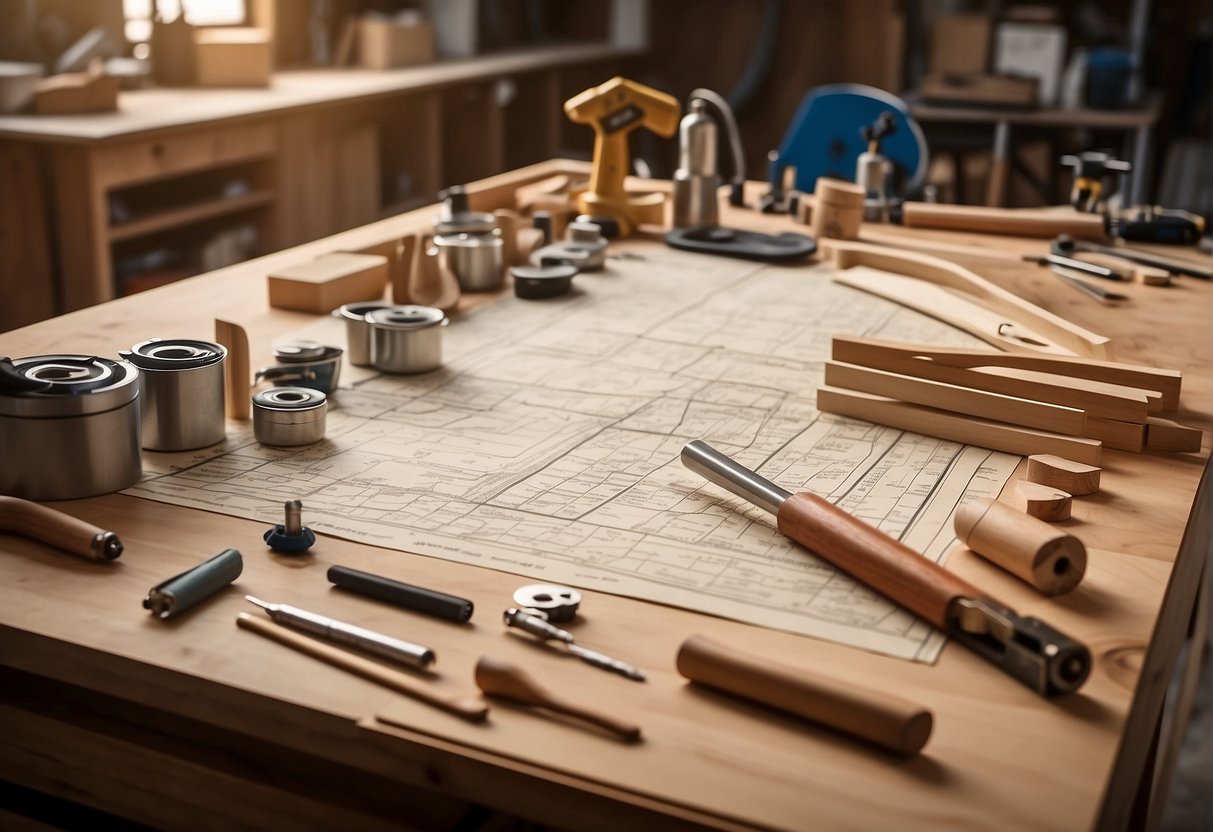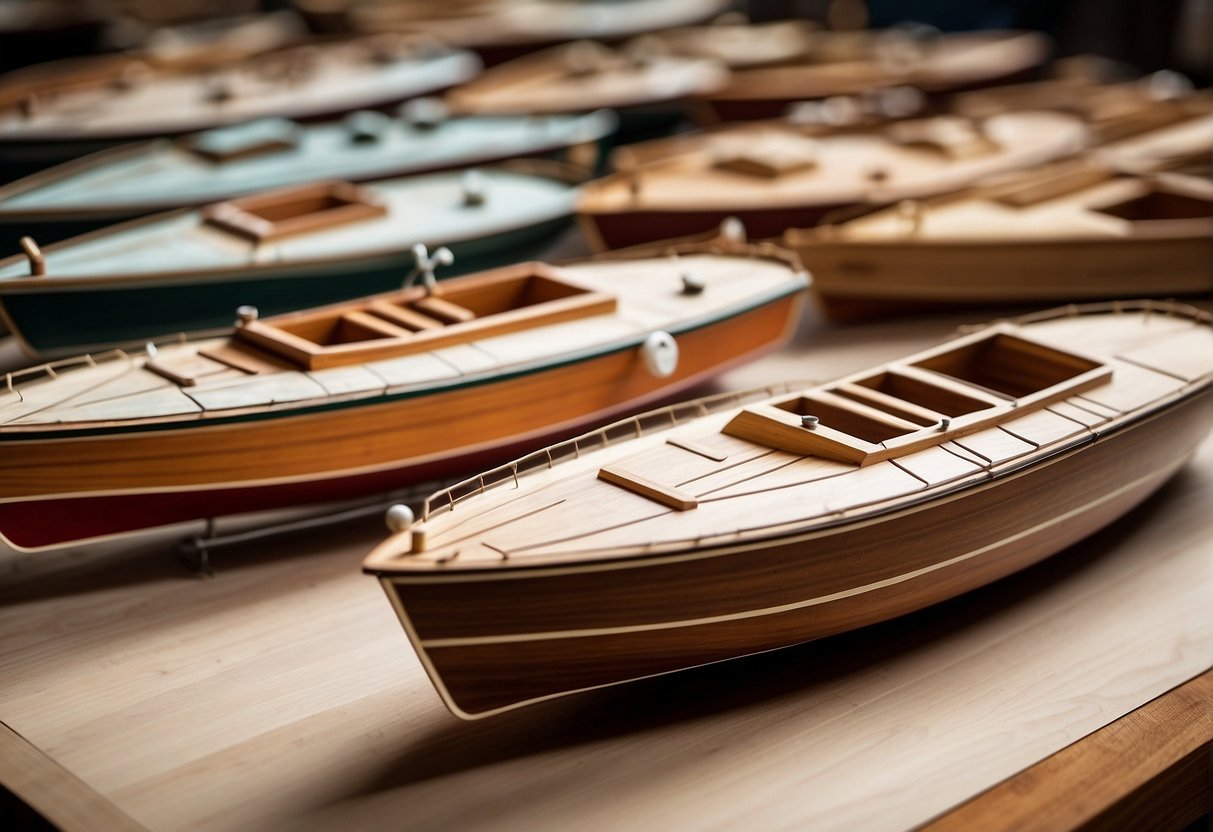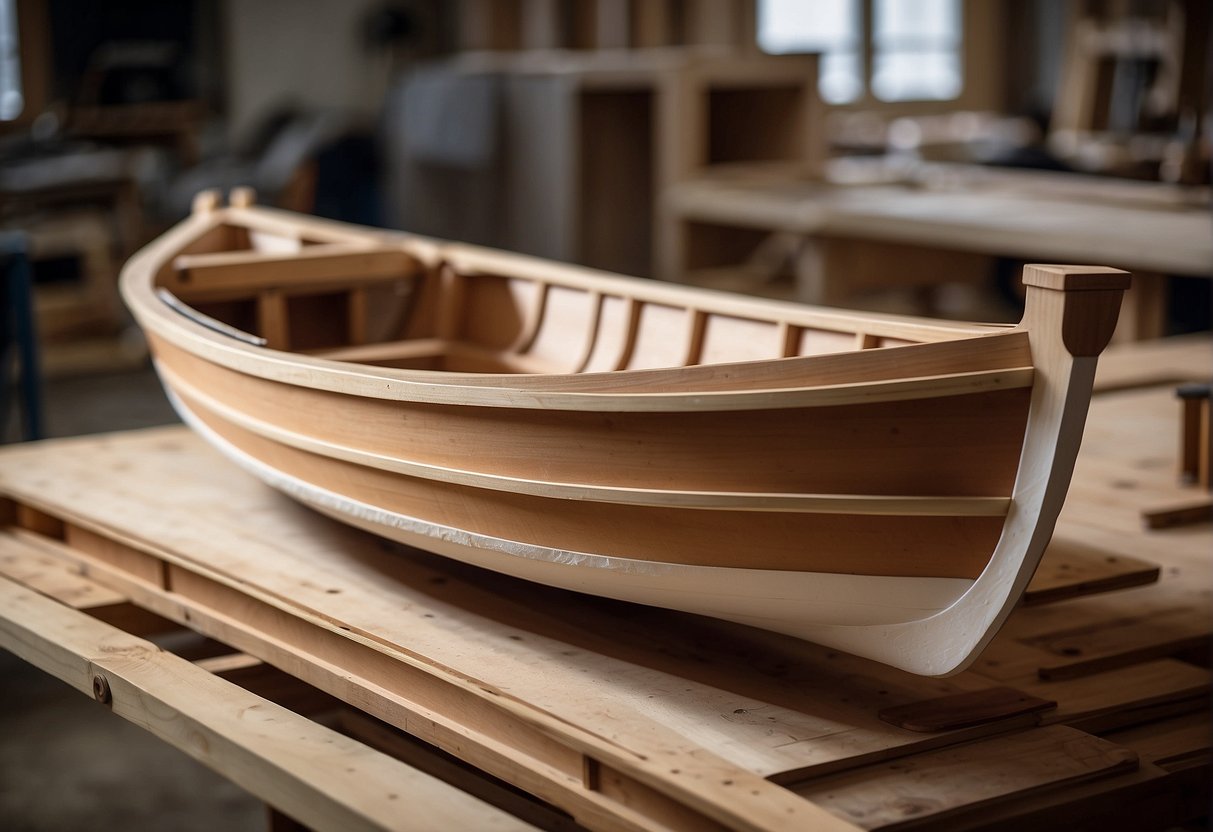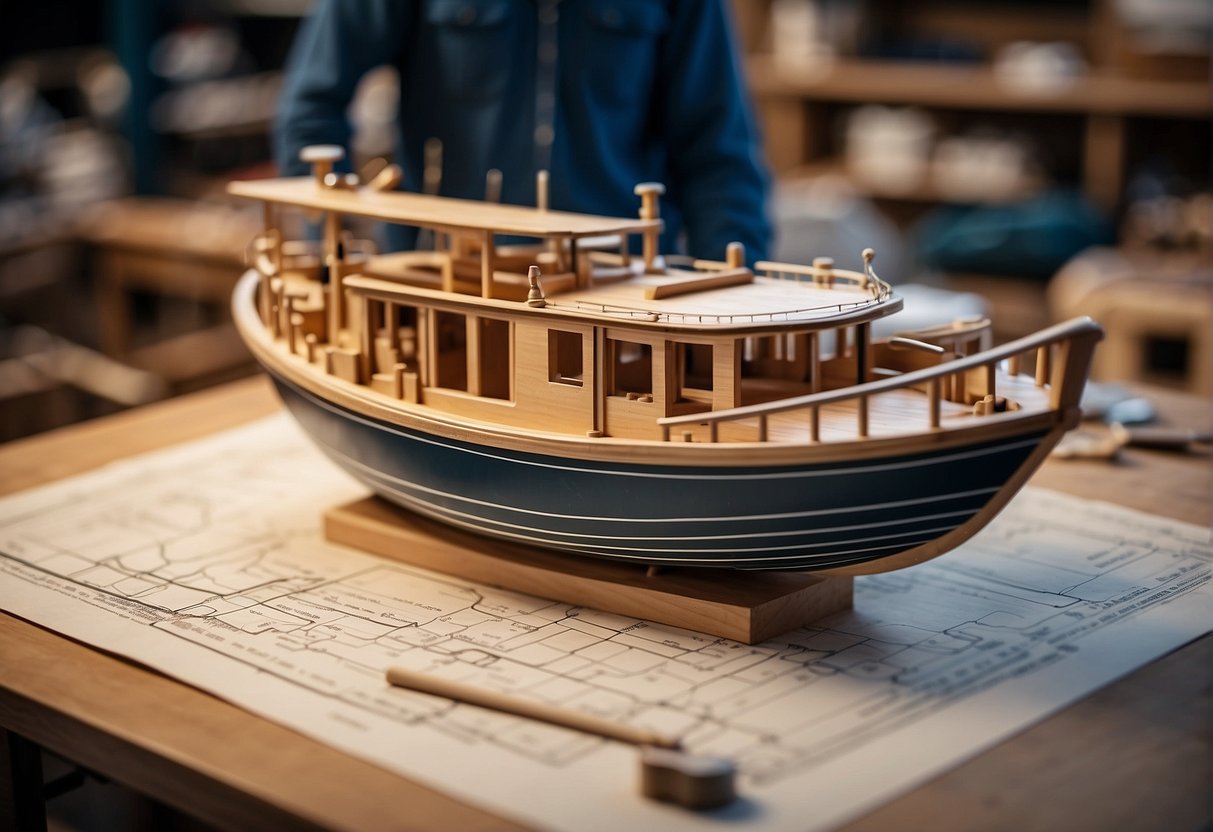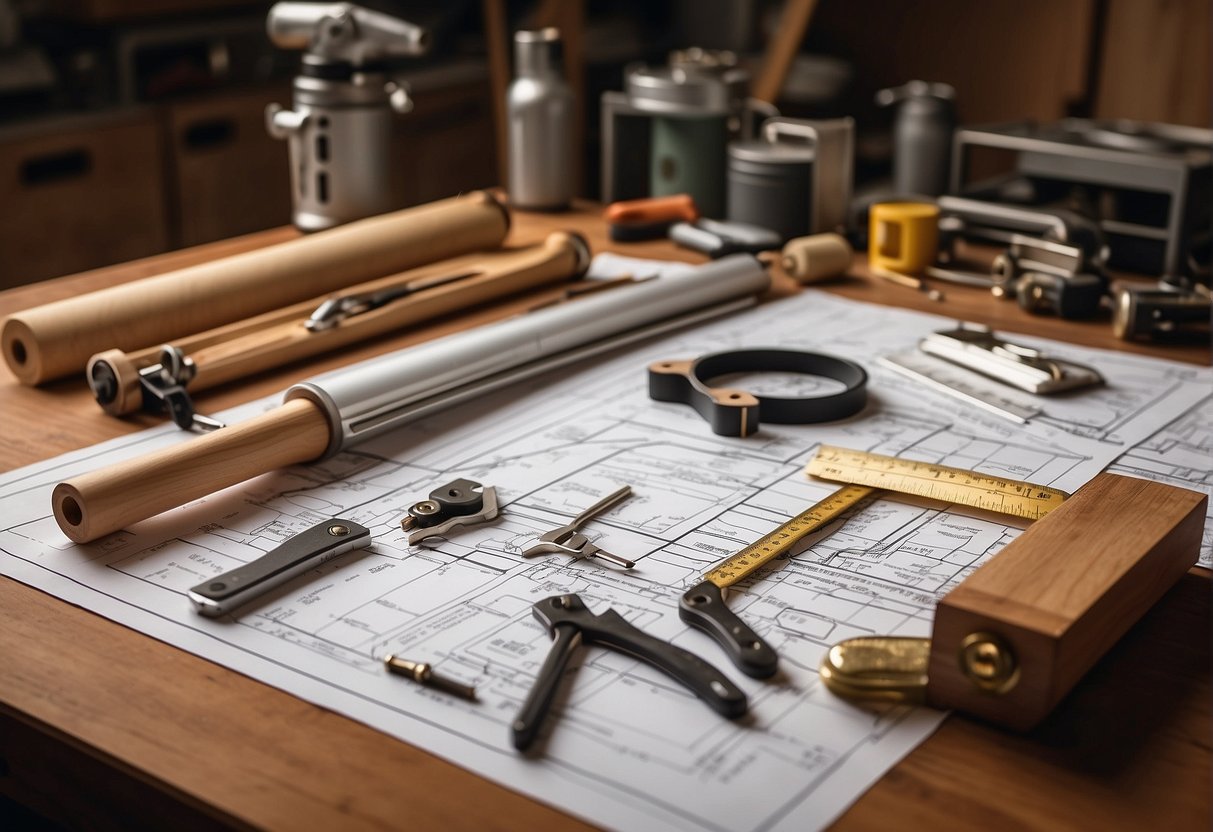I have been a fan of wooden boats for as long as I can remember. There is something special about the way they look and feel that sets them apart from other types of boats. One type of wooden boat that has always caught my eye is the lapstrake boat. These boats have a unique look with overlapping planks that create a distinctive pattern on the hull. In this article, I will explore glued lapstrake boat plans and share some insights into designing, building, and maintaining these beautiful boats.
The history of lapstrake boats dates back centuries, and they have been used for a variety of purposes, including fishing, transportation, and recreation. Over time, the design and construction of these boats have evolved, and today, they are a popular choice for wooden boat enthusiasts. Designing a lapstrake boat requires careful consideration of factors such as size, shape, and intended use. Building a lapstrake boat is a labor-intensive process that involves cutting and shaping planks, fitting them together, and securing them with fasteners or glue. Once the boat is built, it requires regular maintenance to keep it in top condition.
Key Takeaways
- Glued lapstrake boat plans offer a unique and beautiful option for wooden boat enthusiasts.
- Designing and building a lapstrake boat requires careful consideration of factors such as size, shape, and intended use.
- Regular maintenance is essential to keep a lapstrake boat in top condition.
History and Evolution of Lapstrake Boats
As a boat building technique, lapstrake construction has been around for centuries, with its origins dating back to the Vikings in the 8th century. Lapstrake construction involves overlapping planks and fastening them together with screws or nails. This technique was used extensively in the construction of small boats and yachts until the mid-20th century.
Origins of Lapstrake Construction
The Vikings were the first to use lapstrake construction in their boats, which allowed them to build light, seaworthy vessels that could travel long distances. The technique was later adopted by boat builders in Europe and North America. In the United States, Nathanael Herreshoff was one of the most prominent designers of lapstrake boats in the late 19th and early 20th centuries.
Prominent Lapstrake Boat Designers
In recent years, several designers have gained prominence for their work in lapstrake boat plans. Iain Oughtred is one such designer, known for his elegant and functional small boats. His designs often incorporate traditional lapstrake construction techniques, but with modern materials and methods.
John Brooks is another designer who has made a name for himself in the world of lapstrake boats. He has designed and built numerous boats using glued lapstrake construction, a technique that involves using marine-grade plywood and epoxy to create a lapstrake hull without the need for interior framing.
Harry Bryan is a third designer who has contributed significantly to the evolution of lapstrake boat plans. He has developed a method of building lapstrake boats using a combination of traditional and modern techniques, resulting in boats that are both beautiful and functional.
Evolution of Glued Lapstrake Construction
In the 1980s, small craft designers began experimenting with glued lapstrake construction, which involves using marine-grade plywood and epoxy to create a lapstrake hull without the need for interior framing. This technique has become increasingly popular in recent years, as it allows builders to create strong, lightweight boats with a traditional lapstrake appearance.
Glued lapstrake construction has been used in a variety of boat types, from small rowboats to larger yachts. It has also been used to create boats with unique designs and features, such as the curved transoms and graceful lines of John Brooks’ designs.
In conclusion, lapstrake construction has a long and storied history in the world of boat building, and its evolution continues to this day. With the use of modern materials and techniques, designers and builders are creating boats that are both beautiful and functional, while still retaining the timeless elegance of traditional lapstrake construction.
Designing a Lapstrake Boat
As a boat builder, designing a lapstrake boat can be a rewarding project. There are several key factors to consider when designing a lapstrake boat, such as understanding boat design principles, selecting the right materials, and customizing your lapstrake boat.
Understanding Boat Design Principles
When designing a lapstrake boat, it is important to understand basic boat design principles. This includes understanding the sail plan, hull shape, and overall boat design. The sail plan will determine the size and shape of the sails, which will in turn affect the hull shape. The hull shape will determine the boat’s speed, stability, and handling characteristics.
Selecting the Right Materials
Selecting the right materials is crucial when designing a lapstrake boat. Marine plywood is a popular choice for lapstrake boatbuilding due to its strength, durability, and resistance to water damage. Other materials to consider include epoxy, fiberglass, and marine hardware. It is important to select materials that are appropriate for the boat’s intended use and environment.
Customizing Your Lapstrake Boat
Customizing your lapstrake boat is an important part of the design process. This includes selecting the boat’s size, shape, and layout. It is important to consider the boat’s intended use, such as whether it will be used for sailing or motor boating, and whether it will be used for racing or leisure. Customizing your lapstrake boat also includes selecting the boat’s interior and exterior finishes, such as paint, varnish, and upholstery.
Overall, designing a lapstrake boat requires a combination of knowledge, skill, and creativity. By understanding boat design principles, selecting the right materials, and customizing your lapstrake boat, you can create a boat that is both functional and beautiful.
Building Process and Techniques
As an experienced boat builder, I have found that the glued lapstrake construction method is one of the most efficient and effective ways to build a boat. In this section, I will walk you through the building process and techniques involved in creating a glued lapstrake boat.
Setting Up Molds and Building Jig
The first step in building a glued lapstrake boat is to set up molds and a building jig. The molds are templates that are used to shape the planks, while the building jig holds the molds in place during construction.
To set up the molds, I start by creating a pattern of the boat’s shape on a large piece of plywood. Then, I cut out the pattern and use it to create the molds. The molds are then attached to the building jig, which is a sturdy frame that holds everything in place during construction.
Planking and Gluing Techniques
Once the molds and building jig are in place, it’s time to start planking the boat. I prefer to use marine-grade plywood for the planks, as it is strong and durable. The planks are cut to size and then shaped to fit the contours of the molds.
To glue the planks together, I use epoxy. Epoxy is a strong adhesive that creates a watertight seal between the planks. I apply the epoxy to the edges of the planks and then clamp them together until the glue dries.
Adding the Backbone and Keel
After the planking is complete, it’s time to add the backbone and keel. The backbone is the primary structural element of the boat, and it provides support for the planks. The keel is a long, narrow piece of wood that runs along the bottom of the boat and provides stability.
To attach the backbone and keel, I use the same epoxy and clamping technique that I used for the planks. Once the glue is dry, I sand down any rough edges and apply a coat of varnish to protect the wood.
Overall, the glued lapstrake method is a reliable and efficient way to build a boat. With the right tools and techniques, anyone can successfully build a glued lapstrake boat that is strong, durable, and seaworthy.
Finishing Touches and Fittings
After completing the glued lapstrake boat, it’s time to add the finishing touches and fittings. This will not only make the boat look more appealing but will also add functionality to it. Here are some of the important finishing touches and fittings that you can add to your boat:
Sanding and Painting
After the boat is built, sanding and painting it is one of the most important steps. Sanding will help to smooth out the rough edges and create a uniform surface. Once the sanding is done, painting the boat will provide protection against the elements and give it a beautiful finish.
Installing Oars and Sails
The next step is to install the oars and sails. Installing oars will allow you to row the boat, while installing sails will allow you to sail it. Make sure to choose the right size of oars and sails for your boat.
Deck Fitting and Interior Work
Deck fitting and interior work are the final steps in finishing your glued lapstrake boat. Deck fittings such as cleats, chocks, and bollards will allow you to tie up the boat to a dock or buoy. Interior work such as installing seats, storage compartments, and a steering wheel will make the boat more comfortable and functional.
Overall, finishing touches and fittings are an important part of building a glued lapstrake boat. They not only provide protection and functionality but also add to the overall aesthetics of the boat. Make sure to take your time and do it right to ensure that your boat looks and performs its best.
Maintenance and Care
As with any boat, proper maintenance and care are essential to ensure the longevity and performance of your glued lapstrake boat. Here are some tips on how to keep your boat in top condition.
Routine Maintenance Tips
Regular cleaning is key to maintaining the appearance and condition of your boat. Use a mild soap and water solution to clean the deck and hull, and be sure to rinse thoroughly with fresh water. Avoid using harsh chemicals or abrasives that can damage the finish or wood.
Inspect your boat regularly for any signs of wear or damage, such as cracks, rot, or delamination. Address any issues promptly to prevent further damage and maintain the structural integrity of your boat.
Repairing and Restoring Lapstrake Boats
If your boat requires repairs or restoration, it is important to use high-quality materials and techniques to ensure a long-lasting repair. Epoxy resin and marine-grade plywood are recommended for repairs, as they are durable and resistant to water damage.
When restoring a lapstrake boat, it is important to maintain the original design and construction as much as possible. This includes using the same types of wood and fasteners, and preserving any unique features or finishes.
Preservation of Wooden Boats
Preserving the natural beauty of wooden boats requires proper care and attention. Regularly applying a high-quality marine varnish or paint can help protect the wood from the elements and maintain its appearance.
When storing your boat, keep it in a dry, well-ventilated area to prevent moisture buildup and damage. Cover the boat with a breathable cover to protect it from dust and debris.
By following these maintenance and care tips, you can ensure that your glued lapstrake boat remains in top condition for years to come.
Frequently Asked Questions
What are the essential materials needed for building a glued lapstrake boat?
Building a glued lapstrake boat requires a few essential materials, including marine-grade plywood, epoxy resin, fiberglass cloth, and fasteners. The plywood should be of high quality and have a thickness of at least 6mm. Epoxy resin is used to bond the plywood together and should be marine-grade. Fiberglass cloth is used to reinforce the joints and should have a weight of at least 6 ounces per square yard. Fasteners such as screws and nails should be made of stainless steel or bronze to prevent corrosion.
Where can I find free downloadable plans for a lapstrake skiff?
There are several websites that offer free downloadable plans for lapstrake skiffs. Some good sources include the WoodenBoat Forum, which has a section dedicated to designs and plans. The Ensign, a magazine for boat enthusiasts, also offers plans for a glued lapstrake boat. Duckworks is another great resource for finding lapstrake boat plans.
What are the steps involved in the construction of a lapstrake boat?
The construction of a lapstrake boat involves several steps. First, the frames and bulkheads are built and installed. Next, the planks are cut and shaped to fit the frames. The planks are then glued and fastened to the frames, starting at the keel and working upward. Once the planking is complete, the boat is sanded and finished with epoxy and varnish.
Can you recommend any resources for learning about lapstrake planking techniques?
There are several resources available for learning about lapstrake planking techniques. The book “The Gougeon Brothers on Boat Construction” is a comprehensive guide to boatbuilding that includes a section on lapstrake planking. The WoodenBoat Forum is another great resource for learning about lapstrake planking techniques, as there are many experienced boatbuilders who are happy to share their knowledge.
What are the common challenges faced when building a glued lapstrake wooden boat?
One of the most common challenges faced when building a glued lapstrake wooden boat is achieving a tight fit between the planks. This requires careful shaping and fitting of the planks, as well as precise placement of the fasteners. Another challenge is preventing the epoxy from running or dripping during the bonding process. This can be avoided by using a thickened or non-drip epoxy.
Are there any lapstrake boats available for sale that are built using traditional methods?
Yes, there are lapstrake boats available for sale that are built using traditional methods. Many boatbuilders specialize in lapstrake construction and offer custom-built boats for sale. There are also several companies that offer lapstrake boat kits for sale, which can be assembled using traditional methods.

Hi, I’m Sal Muller of Tooltrip.com. My DIY experience led me to understand essential power tools for home projects. Tooltrip.com guides enthusiasts and professionals in choosing right tools for any job. I provide concise top tool reviews for easier, efficient DIY.

